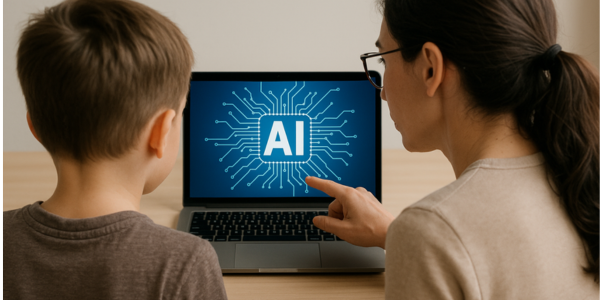Artificial Intelligence (AI) is no longer found in science fiction movies! It is here and it’s shaping the world in which we live every day. Introducing pupils of all ages to real-world AI applications can help to encourage curiosity, inspire creative thinking and encourage them to critically question the technology they encounter. Below I share my 5 examples of AI in action that are perfect for discussion in classrooms (or at home).
- Coca-Cola’s AI-Generated Advertisements
The Christmas 2024 Coca-Cola advert used AI. Using generative AI tools, the company created a visually stunning and engaging advert, blending real footage with AI-generated elements. This example can be used to show pupils of all ages how AI can amplify human creativity while prompting important questions, such as: Who owns the ideas generated by AI? What ethical considerations arise when AI is used in advertising? Where are the images used to train AI systems obtained?
- Self-Driving Cars
Self-driving cars are a great example of AI at work. Companies like Waymo are using machine learning to teach vehicles to navigate roads safely. Pupils can learn how sensors, cameras, and algorithms work together to “see” and make decisions. These cars open discussions about safety, trust, and the future of transportation. Try questions like this in discussion: What happens if the AI makes a mistake? Are there any jobs related to the driving industry which will disappear with widescale deployment of autonomous vehicles?
- AI-Driven Vending Machines
Modern vending machines are no longer just about dispensing snacks. AI-powered vending machines analyse customer data to recommend products and even adjust stock based on demand. Discussing this with pupils can highlight the growing influence of AI on everyday decision-making and how it changes consumer behaviour. Questions to ask are, Who benefits from AI vending machines and why? Are there any downsides?
- Britain’s Got Talent and Stable Diffusion AI
In the popular show America’s Got Talent Stable Diffusion AI has been used by contestants to create visuals that complement alive performance. This example of AI in entertainment helps pupils appreciate the creative potential of AI while exploring deeper questions: How does AI change our expectations of art and performance? What do you think will be the overall impact of AI on the creative industries?
- Streaming Services
Streaming platforms like Netflix use AI to transform how we watch TV and movies. By analysing viewing habits and preferences over time, AI algorithms recommend shows and films tailored just for us. Through this personalised experience viewers are engaged and utilise Netflix’s services more. A couple of questions to ask here are: How does AI improve the experience for viewers and streaming platforms? Could AI recommendations limit the variety of shows people discover?
Encouraging Deeper Exploration with Books
To further support children with understanding technology, books with a tech theme can play a part. Reading stories with AI themes allows pupils to explore the benefits, challenges and ethical dilemmas of AI in a safe and imaginative way.


